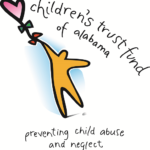Drug overdose deaths have surpassed 100,000 annually for the first time in history. While many of these overdoses are driven by synthetic opioids like fentanyl, other dangerous drugs are circulating in the drug supply that can enhance the effects of opioids and increase the risk of overdose even further. One of these drugs is called xylazine.
Xylazine is an animal tranquilizer that has been increasingly detected in the illicit drug supply across the United States. In some areas, such as Philadelphia, xylazine is found in up to 91% of opioid drug samples.[1]
What is Xylazine?
Xylazine, also known as “tranq,” is a non-opioid sedative, analgesic, and muscle relaxant drug that is only approved by the FDA for use in veterinary medicine. It is most commonly used as a large animal tranquilizer. The drug is a central nervous system depressant that can cause drowsiness, amnesia, slow breathing, slow heart rate, and dangerously low blood pressure.[2]
How Xylazine is Affecting Street Drugs Today
Some people report using xylazine with fentanyl or heroin to lengthen the euphoric effects, but most people aren’t taking xylazine to get high. Instead, it is increasingly being found added to illicit opioids including heroin and fentanyl and they are taking it unknowingly. Dealers may add the drug to other substances because it is low-cost, easy to access, and powerful, allowing them to get more profit and sell stronger drugs.
Accidentally ingesting small amounts of xylazine can lead to a life-threatening overdose. Overdose deaths linked to xylazine have also involved substances like cocaine, benzodiazepines, alcohol, gabapentin, methadone, and prescription opioids.[2]
Drugs adulterated with xylazine are becoming more and more common in the United States with the Northeast being the hardest hit so far. From 2015 to 2020, NIDA reports that the percentage of drug overdose deaths involving xylazine in Pennsylvania increased from 2% to 26%. In 2021 it was involved in nearly 19% of all drug overdose deaths in Maryland.[2]
The Northeast isn’t the only place being affected by xylazine, though, as the drug has been increasingly found across the South and the Western United States. In 2022, the director of the Kentucky Poison Control Center said he has seen xylazine become a concerning problem among Kentuckians struggling with addiction.[3] In Alabama, the Jefferson County Coroner has blamed both xylazine and fentanyl for rising overdose deaths.[4]
Xylazine is Resistant to Naloxone (Narcan)
Opioid overdose can be life-threatening, but there is a medication called naloxone (Narcan) that can help reverse an opioid overdose if it is administered promptly. Unfortunately, naloxone doesn’t work on xylazine because it is not an opioid. It may have many of the same effects as opioids, but it works differently on a chemical level in the brain.
Because most xylazine overdoses also involve opioids, and because opioids and xylazine increase the effects of one another, public health officials still recommend administering naloxone in the event of a suspected opioid or xylazine overdose. After administering naloxone, if the person does not regain consciousness, rescue breaths can be given to help restart the lungs even if the person does not wake up. Rescue breaths are given by giving one breath every five seconds until the person starts breathing again. The goal of reversing xylazine overdose is not to make the person wake up–it is to make sure they don’t stop breathing.[5]
If you are helping someone who has experienced an overdose, you may not be sure what drugs they took or what adulterants their drugs contained. As a result, you should always call 9-1-1 immediately, administer naloxone (if available) as a precaution, and stay by the person’s side until help arrives.
Additional Dangers of Xylazine Abuse
Increased overdose risk isn’t the only danger associated with xylazine abuse. Other potential dangers include:
- Brain injury – People who take xylazine may be sedated for six to eight hours. This is a long time to be sedated, and sedating oneself over and over again for long periods of time can lead to brain injury or cognitive decline.
- Sexual or physical assault – An NPR report discusses a medical director in Massachusetts who has seen people who have been sexually or physically assaulted while they were unconscious.[5]
- Boils, abscesses, and amputations – People who inject drugs containing xylazine may be at an increased risk of infection, boils, and abscesses. Xylazine is also known to cause fast-moving necrotic wounds on the extremities, so the drug can basically eat away at the skin, leading people to require amputations.[6]
- Slow healing time – Xylazine reduces blood flow and oxygen rates which can slow down wound healing time.
Unlike fentanyl, there are no xylazine test strips that can help you detect the substance in your drugs. The best way to avoid xylazine is to abstain from illicit drug use altogether and only take medications that are prescribed to you. If you or people you love uses drugs, be sure to carry naloxone and be aware of the dangers that lurk in your drug supply today.
References:
- https://www.sciencedirect.com/science/article/pii/S2772724622000488
- https://nida.nih.gov/research-topics/xylazine
- https://www.wlky.com/article/horse-sedative-xylazine-human-overdoses-kentucky/41590771#
- https://www.cbs42.com/your-voice-your-station/coroner-fentanyl-xylazine-to-blame-for-rising-overdose-deaths-in-jefferson-county/
- https://www.npr.org/sections/health-shots/2022/08/05/1114453468/animal-tranquilizer-street-drugs
- https://6abc.com/tranq-drug-what-is-xylazine-philadelphia-supply-animal-tranquilizer/12272608/








